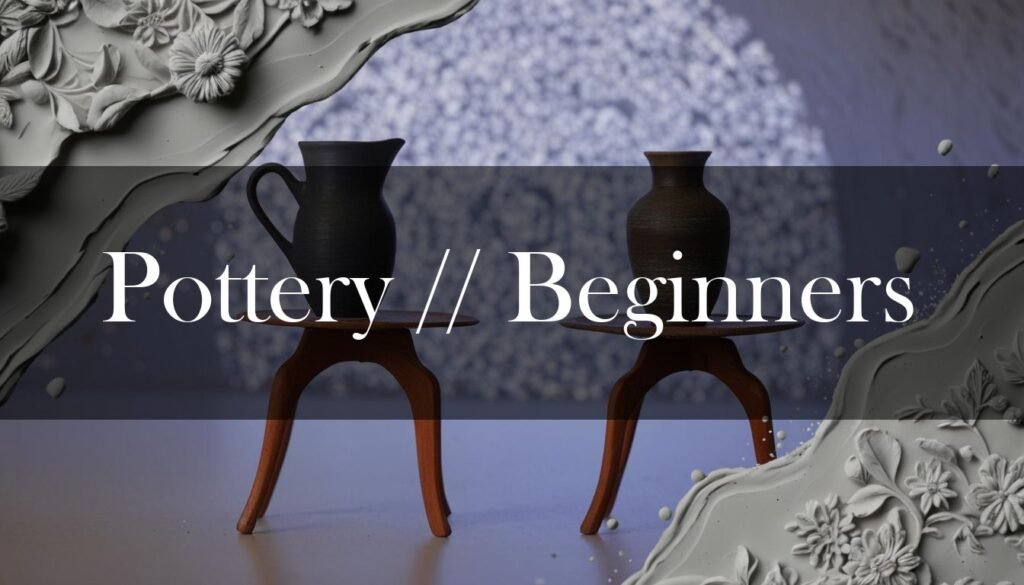Starting your pottery journey is an exciting adventure filled with creativity and self-discovery. Pottery is a craft that combines technique with artistry, and it’s more accessible than you might think. Let’s explore the essential tools you’ll need, some simple techniques to get you started, the best types of clay for beginners, advice on setting up a workspace, and a few easy projects to ignite your passion.
To begin, you’ll need a few fundamental tools. A pottery wheel is central to wheel-throwing, helping you shape clay into symmetrical forms, but these can range from $400 to $2,000, so don’t feel like you need one right away. A clay wire cutter is essential for slicing clay and typically costs around $30. Potter’s ribs, costing about $15, are used to shape and smooth clay surfaces. A needle tool is perfect for scoring clay and adding fine details, and can be found for around $6. Loop and ribbon tools, approximately $20 for a set, are great for trimming and hollowing out forms. Sponges for moisture, wooden modeling tools for contouring, and flexible metal scrapers for refining surfaces are also indispensable. Rounding out the toolkit, you will need a fettling knife for cutting and carving clay, a banding wheel for decorating, a rolling pin for rolling slabs, brushes for glazes, an apron, buckets, plastic bats, a sponge on a stick, calipers, slip trailing bottles, and texture tools. Starter kits offer a wide array of tools, ensuring you have everything to begin.
Once you have your tools, it’s time to learn some basic techniques. The pinch pot method is the simplest, where you form a ball of clay and pinch it into shape with your fingers. Coil building involves rolling clay into coils and layering them to build walls. Slab construction uses flat pieces of clay to create geometric forms. Wheel throwing is more advanced, requiring a pottery wheel to shape symmetrical pieces. Regardless of the technique, always wedge your clay to remove air bubbles. If using a wheel, focus on centering the clay. Most importantly, embrace mistakes as learning opportunities.
“Embrace mistakes as learning opportunities.”
Choosing the right clay is crucial for beginners. Earthenware is easy to shape and fires at low temperatures, making it ideal for decorative pieces. Stoneware is more durable and fires at higher temperatures, perfect for functional items like mugs. Porcelain, known for its delicate nature, is generally not recommended for beginners. Air-dry and polymer clays are great alternatives if you don’t have a kiln. Consider factors like skill level, project type, firing temperature, texture, and budget when selecting your clay.
- Rocky Mountain Clay CT3
- AMACO High Fire Stoneware Clay
- Activa Blackjack Low Fire Clay
The above are recommended clay products to get you started.
Setting up a home pottery workspace involves several considerations to ensure a functional and safe environment. A garage, basement, or spare room can work well if it has adequate ventilation and lighting. Essential equipment includes a pottery wheel, a sturdy worktable, and a kiln if you plan to fire pieces at home. Organize your workspace with shelves, pegboards, and labeled containers. Designate areas for throwing, hand-building, glazing, and drying. Proper ventilation is vital, especially when working with kilns and glazes. Manage dust by regularly cleaning surfaces with a wet sponge. Wear protective gear, including a respirator, gloves, and closed-toe shoes. Keep a first aid kit accessible and ensure your workspace is well-lit. Dispose of clay water outdoors to prevent clogging drains.
For easy beginner projects, start with pinch pots, a simple method using just your hands. Coil pots are created by layering long rolls of clay. Slab construction involves rolling out flat sheets of clay and assembling them into forms. If you have a pottery wheel, try making simple bowls. Vases can be made with or without a wheel, offering a taller structure to practice forming. Crafting mugs introduces attaching handles, adding functionality to your creations. Lastly, plates and dishes involve working with flat forms, which can be shaped without a wheel. These projects will help you build a solid foundation in pottery techniques, setting you up for more complex creations in the future.





